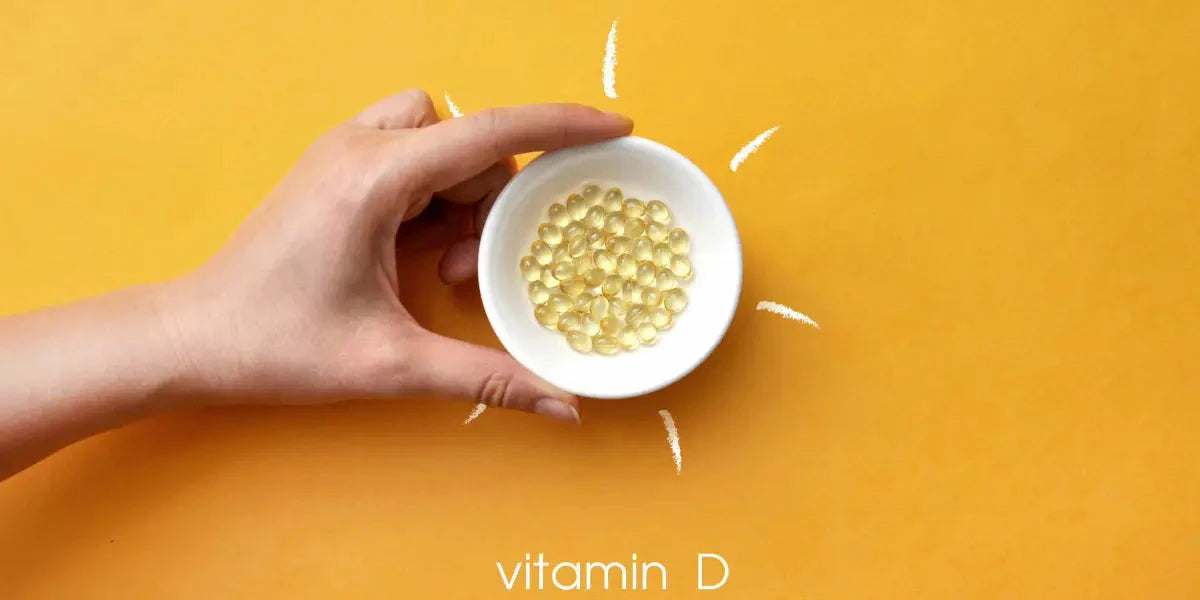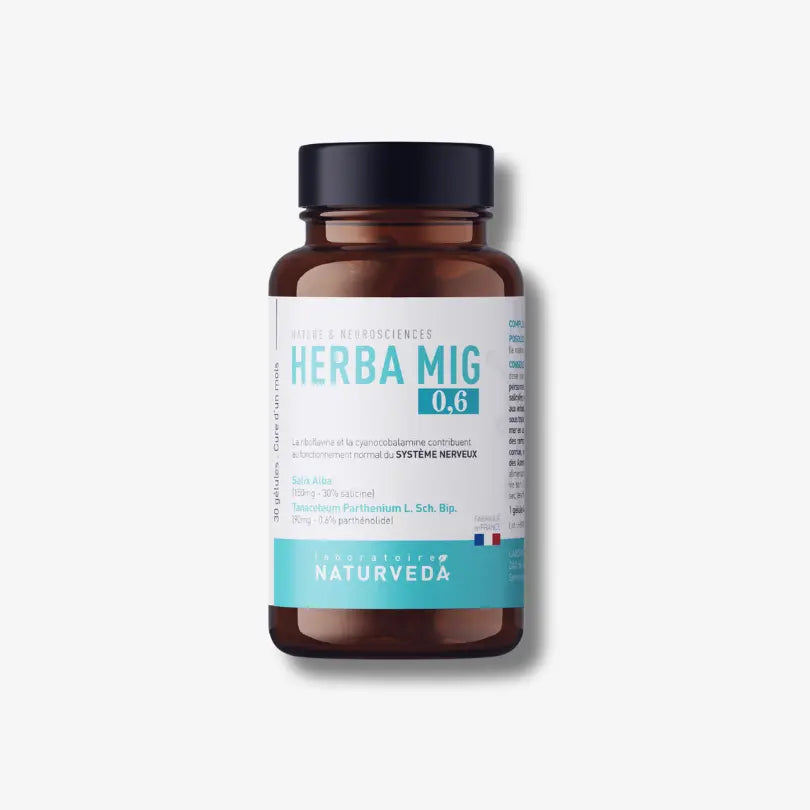With the arrival of winter and less sunlight, the issue of vitamin D becomes crucial to maintaining optimal health. Vitamin D, often called the "sunshine vitamin", plays an essential role in various biological processes in the body. However, the challenges posed by the winter season, such as shorter days and harsh weather conditions, can compromise the natural skin synthesis of this vitamin. Why is it important to maintain good vitamin D levels? How to prevent deficiencies?
What is vitamin D used for?
Vitamin D comes in two main forms: D2 (ergocalciferol) and D3 (cholecalciferol). The first is naturally synthesized by plants, while the second is produced by the body during exposure of the skin to ultraviolet radiation , mainly UVB rays from the sun. Vitamin D should also not be considered a vitamin, but rather a hormone (fat-soluble pro-hormone).
This fat-soluble vitamin is essential for the absorption of calcium from food, thus contributing to the maintenance of calcium and phosphorus homeostasis in the blood and tissues. Maintaining an adequate level of calcium in the blood is essential to guarantee optimal mineralization of tissues (bones, cartilage, teeth), allow effective muscle contraction, ensure appropriate nerve transmission and promote adequate coagulation.
Vitamin D therefore plays an essential role in various aspects of health , including:
- The quality of bone and muscle tissue.
- Strengthening the immune system.
- Prevention of inflammation.
- Hormonal regulation.
- The regulation of growth and differentiation of a large proportion of cells, whether normal or malignant.
- Pain management .
Vitamin D deficiency
Vitamin D deficiency is characterized by a blood concentration below 10 ng/mL . Although the thresholds defining a deficit are not the subject of unanimous consensus, it is essential to distinguish general recommendations from those intended for the care of individuals at risk.
Symptoms
Clinical manifestations of vitamin D deficiency include:
- Muscle disorders such as decreased muscle tone, tetany attacks and convulsions.
- Bone problems such as osteomalacia in adults and rickets in growing young people, which can lead to bone deformities as well as bone and muscle pain. Insufficient vitamin D intake can also lead to a reduction in bone mass, thereby increasing the risk of fractures, especially when physical activity is reduced.
- More rarely, a vitamin D deficiency can cause anemia .
People at risk of deficiencies
Due to the body's decreased ability to absorb or synthesize vitamin D with age, older adults are particularly vulnerable, at increased risk of osteoporosis if they are deficient in vitamin D.
Other population groups are also at high risk, such as newborns, infants, pregnant women, and postmenopausal women . Indeed, hormonal changes associated with menopause can lead to bone demineralization, thereby increasing the likelihood of fractures. In addition, individuals with dark or dark skin , whose synthesis of vitamin D through sun exposure is less efficient, generally require more prolonged sun exposure, increasing their propensity for insufficient levels of this vitamin. Obese people may also have lower vitamin D levels.
Finally, certain factors, such as specific diets excluding meat, fish, eggs and dairy products or pathologies leading to intestinal malabsorption can aggravate the risks of deficiency. Likewise, individuals residing in regions that are geographically remote or subject to winter weather conditions are also at greater risk of vitamin D deficiency.
How to naturally prevent vitamin D deficiency?
The prevention of vitamin D deficiency is based on two main axes: diet and exposure to the sun.
Food
Faced with the challenges inherent in obtaining adequate vitamin D during the winter season, special attention must be paid to diet, which can contribute to meeting between 15 and 30% of vitamin D needs. Certain foods turn out to be natural sources rich in this crucial vitamin. These include:
- Oily fish such as herring, sardines, salmon and mackerel, which are positioned as the primary food source of vitamin D. It is recommended to consume one serving per week.
- Dairy products enriched with vitamin D , such as yogurt, cottage cheese, cheese and milk.
- Eggs, and more specifically egg yolks.
- Dark chocolate
- Breakfast cereals enriched with vitamin D.
- Butter and margarine.
- Offal , especially liver.
- To a lesser extent, meat and certain mushrooms such as chanterelles, porcini mushrooms and morels.
It also remains crucial to judiciously integrate these foods into a diversified daily diet in order to maximize sources of vitamin D.

Sun exposure
Most vitamin D synthesis occurs in the skin under the influence of ultraviolet B (UVB) rays. To ensure a sufficient daily intake of vitamin D, it is recommended to expose yourself to the sun for between 15 and 20 minutes per day at the most favorable times, i.e. late morning or early afternoon. noon. The vitamin D thus produced by the skin is stored in the liver, muscles and adipose tissues, then used by the body during non-sunny periods.
The winter season, however, poses a particular challenge in terms of vitamin D synthesis. Several factors increase the risk of deficiency during this period. Shorter days and cold climate often limit time spent outdoors, reducing sun exposure. Geographical position also influences the angle of incidence of the sun's rays, thus affecting the skin's production of vitamin D. In addition, covering clothing and frequent use of sunscreen, although essential for protection against harmful effects of the sun, can hinder the synthesis of this vitamin.
To counter the harmful effects of vitamin D deficiency during winter, exposure to the sun remains an essential strategy. Although the winter sun may seem less intense, it is crucial to maximize time spent outdoors during sunny periods . However, it's important to find a happy medium, as excessive exposure can increase the risk of skin problems such as sunburn and premature aging. Practical tips, such as choosing specific times of day to expose yourself to the sun and adjusting the duration based on skin type, can help maximize the benefits of this approach.
Update on food supplements
Vitamins D2 and D3 can be chemically synthesized and used in supplement form. For example, in the event of deficiencies, additional vitamin D intake may be necessary . Indeed, even with a balanced diet and optimal exposure to the sun, vitamin D supplementation may be essential, particularly in the context of certain pathologies. Individual needs vary depending on various factors such as age, gender, geographic region and lifestyle.
Healthcare professionals are able to assess vitamin D levels in the blood and recommend appropriate supplements. It is essential to tailor supplementation according to the specific needs of each individual, and it is always best to consult a healthcare professional before initiating a vitamin D supplementation program.
Support from a healthcare professional helps avoid a major risk: overdose . Excessive intake can lead to hypercalcemia, characterized by high levels of calcium in the blood. This condition, far from being harmless, can cause headaches, weight loss, intense fatigue, nausea and vomiting. In addition, it can lead to calcification of certain tissues and have cardiac consequences. In the event of severe and prolonged hypercalcemia, it can even lead to irreversible kidney failure, qualified as vitamin D intoxication. Therefore, it is imperative to respect the recommended doses and to carefully monitor the intake of vitamin D supplements under supervision of a health professional.
In conclusion, vitamin D, often called the “sunshine vitamin,” plays an essential role in various biological processes. As winter approaches, maintaining adequate levels becomes crucial. Deficiency, especially in populations at risk, can lead to muscle and bone disorders and increase the risk of fractures. To prevent deficiencies, a diet rich in vitamin D, well-dosed exposure to the sun, and possibly supplements under medical supervision are recommended. Taking care to avoid overdose is essential to avoid serious complications.
References :
Handles. (March 2, 2022). Vitamin D: why and how to ensure sufficient intake?
Vidal. (February 7, 2023). The special case of vitamin D.
Leon Berard Cancer Center. (Updated July 19, 2022). Vitamin D and cancer.




